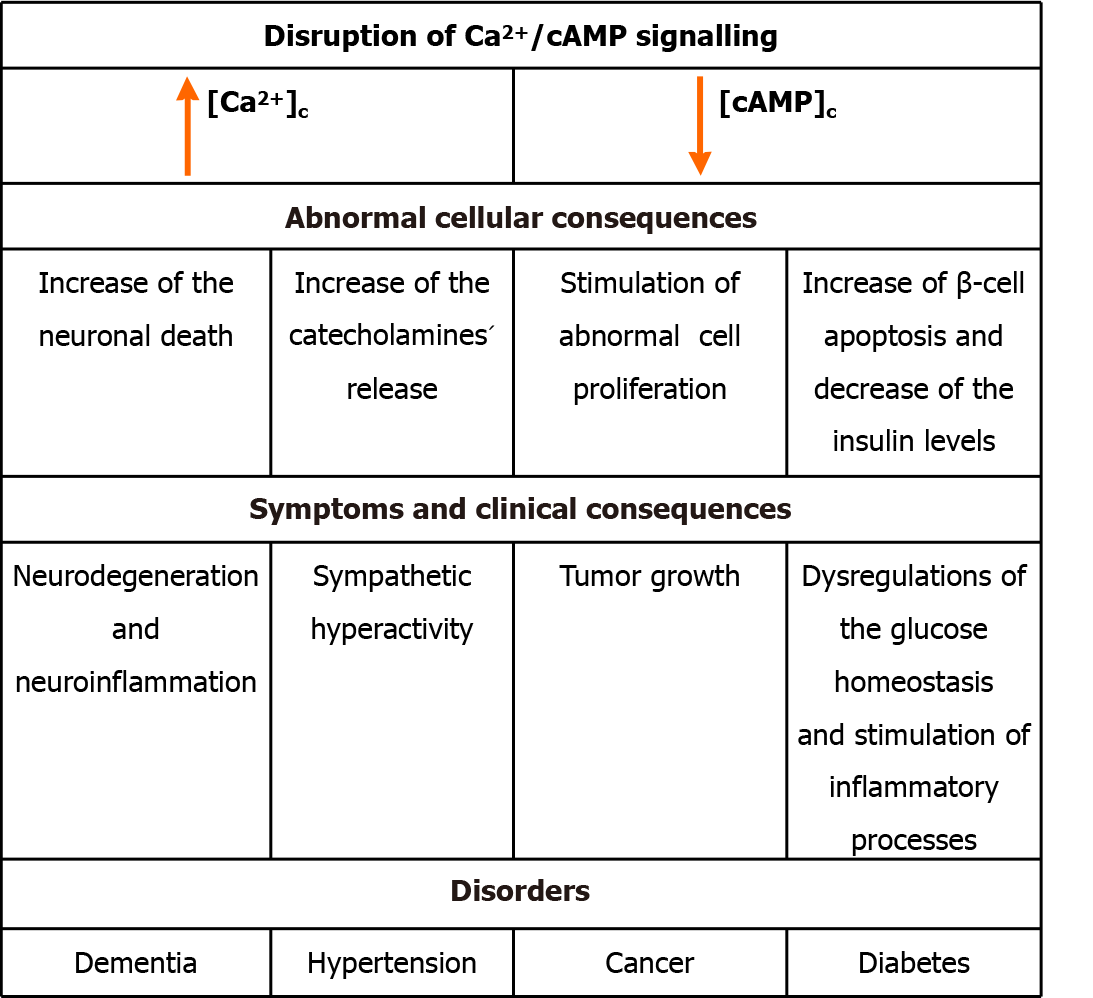Copyright
©The Author(s) 2021.
World J Diabetes. Jun 15, 2021; 12(6): 767-779
Published online Jun 15, 2021. doi: 10.4239/wjd.v12.i6.767
Published online Jun 15, 2021. doi: 10.4239/wjd.v12.i6.767
Figure 1 Pharmaceutical modulation of Ca2+/3'-5'-cyclic adenosine monophosphate signaling.
Decreasing Ca2+ influx through L-type Ca2+ channels, e.g., endorsed by Ca2+ channel blockers (CCBs), enhances adenylyl cyclase activity (and consequently increases 3'-5'-cyclic adenosine monophosphate (cAMP) levels; identified as a Ca2+/cAMP signaling interaction), and these effects of CCBs could be increased by cAMP-enhancer compounds (such as phosphodiesterase inhibitors). CCBs: Ca2+ channel blockers; cAMP: 3'-5'-cyclic adenosine monophosphate; AC: Adenylyl cyclase; PDEs: Phosphodiesterases.
Figure 2 The Ca2+/3'-5'-cyclic adenosine monophosphate signaling dysregulations and their consequences.
Up arrow: Increasing; Down arrow: Decreasing. [Ca2+]c: Intracellular concentration of Ca2+; [cAMP]c: Intracellular concentration of 3'-5'-cyclic adenosine monophosphate.
- Citation: Bergantin LB. Diabetes and inflammatory diseases: An overview from the perspective of Ca2+/3'-5'-cyclic adenosine monophosphate signaling. World J Diabetes 2021; 12(6): 767-779
- URL: https://www.wjgnet.com/1948-9358/full/v12/i6/767.htm
- DOI: https://dx.doi.org/10.4239/wjd.v12.i6.767










